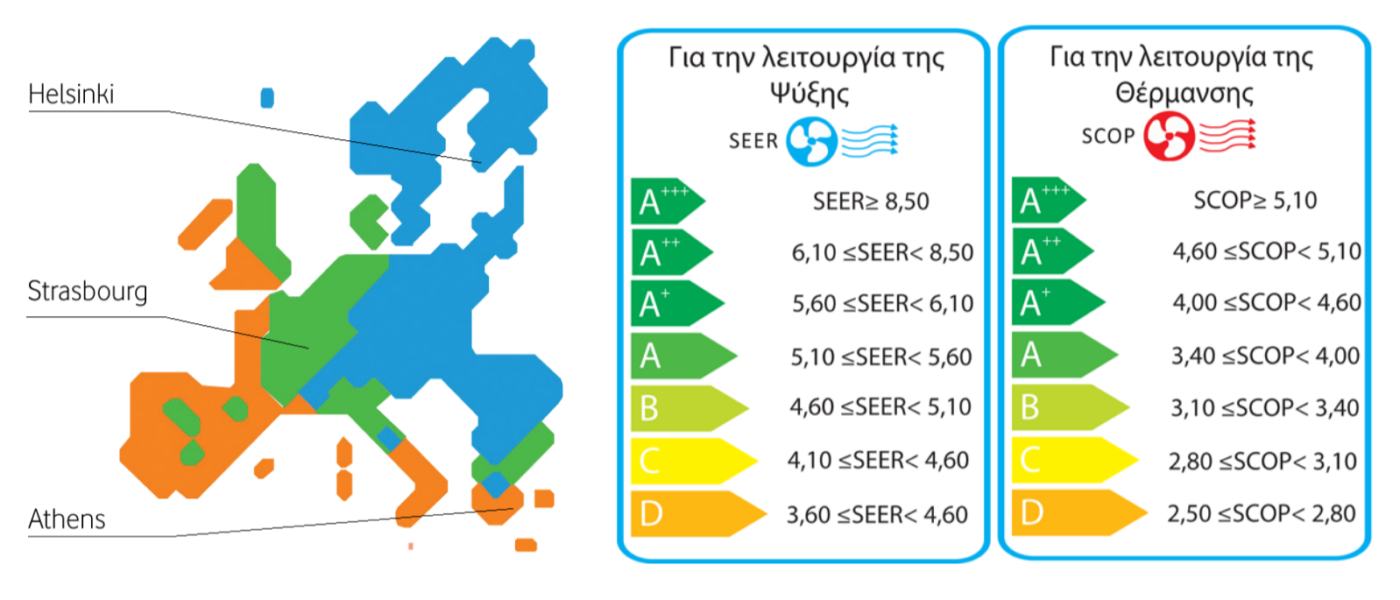A FEW WORDS ABOUT THE ENERGY CLASSES
The European Union, having set ambitious targets for the climate protection and the more efficient use of energy has issued since 2002, a series of directives with the last 2009/125/EC (ERP directive,Ecodesign) which identifies the ecodesign requirements should have all of the products associated with energy consumption. Part of the above directive is a regulation Lot10 who has been in effect since 01/01/2013 and for all air conditioners with a rated performance in cooling up to 12kw.
In the context of this directive introduces two new indicators (SEER and SCOP), which depict more realistic to the actual energy efficiency of air conditioners.The main difference from the previous (EER and COP) is that in the calculation are taken into account temperature variations and different modes of operation of the air conditioner on an annual basis.
SEER (Seasonal energy efficiency ratio) representative for the whole cooling season.Defined as a ratio of the annual cooling demand divided by the annual electricity consumption (the annual consumption of cooling-based on 350 hours of operation)
SCOP (Seasonal coefficient of performance) representative for the whole heating season.Defined as the ratio of the annual heating demand and the annual electricity consumption (the annual consumption of heating is based on 1400 hours of operation)
For the operation of the heating and because of the climatic conditions affect very much in the mode of air-conditioners have been established for Europe 3 climate zones.
Average climate zone with reference to Strasbourg, where the required power refers to the -10°C.
Cold climate zone with reference to Helsinki, where the required power refers to the -22°C.
Warm climate zone with reference to Athens, where the required power refers to the +2°C.
All manufacturers is required to accompany the devices technical data on the basis of measurements carried out in conditions of the Middle zone.
The above temperatures of reference is the lower temperatures in which it is achieved full performance in heating without electrical resistance.
For the Middle zone climate manufacturers can select temperatures between -10°C and +2°C. MITSUBISHI ELECTRIC has chosen reference temperature at -10°C.
In accordance with the directive for 2015 and 2016, the air-conditioning devices that are imported into the usa should have a maximum energy efficiency class A+ and a minimum acceptable F.Every two years there will be an additional + to maximum energy class with a peak in 2019, where is the minimum acceptable energy class is D, and the maximum of the A+++ in conditions average climate zone.
MITSUBISHI ELECTRIC wanting to always be at the forefront has on the market as of 2013 the top of the series FH with energy efficiency class A+++ and in the cooling and heating in conditions of medium climate zone.

